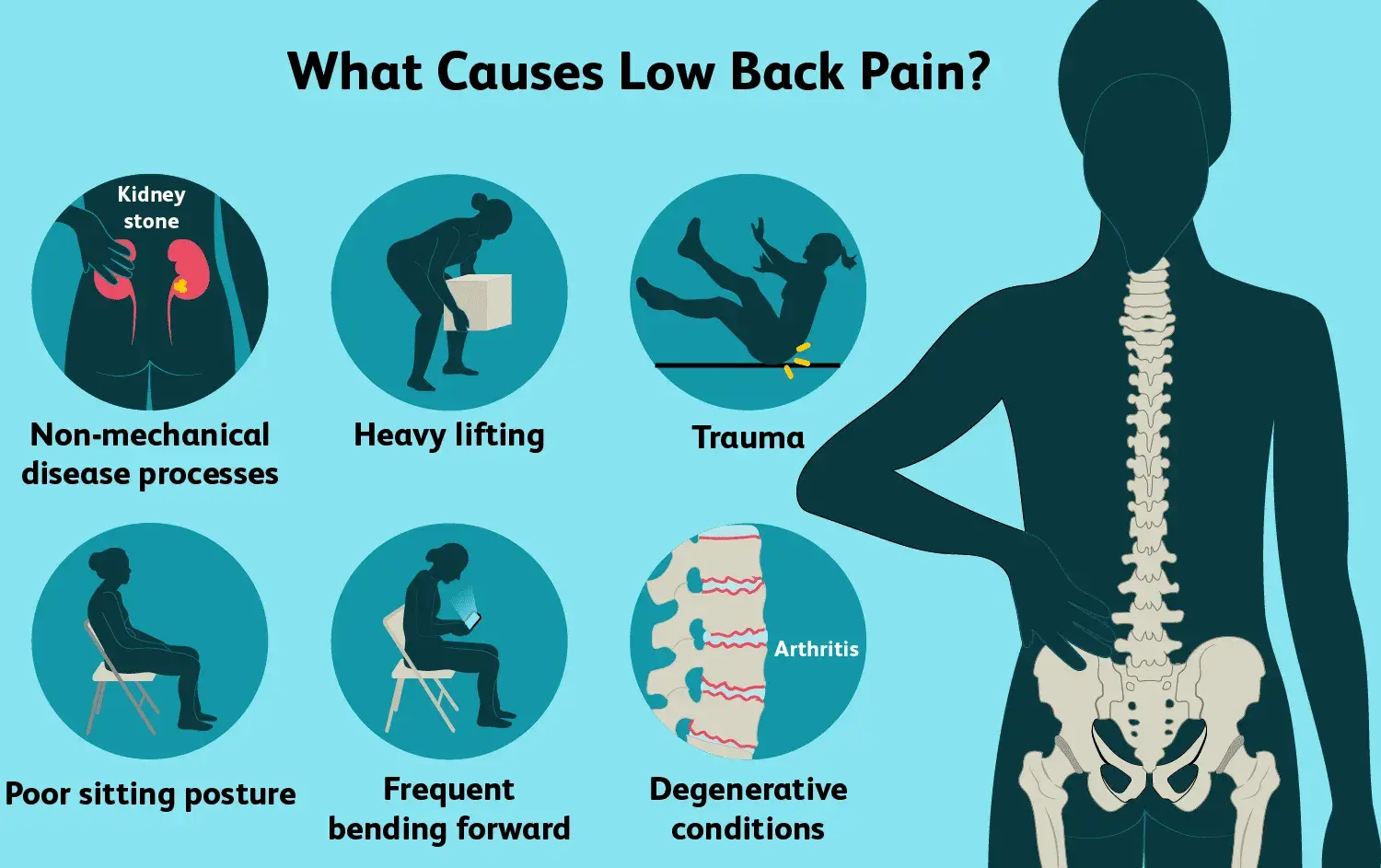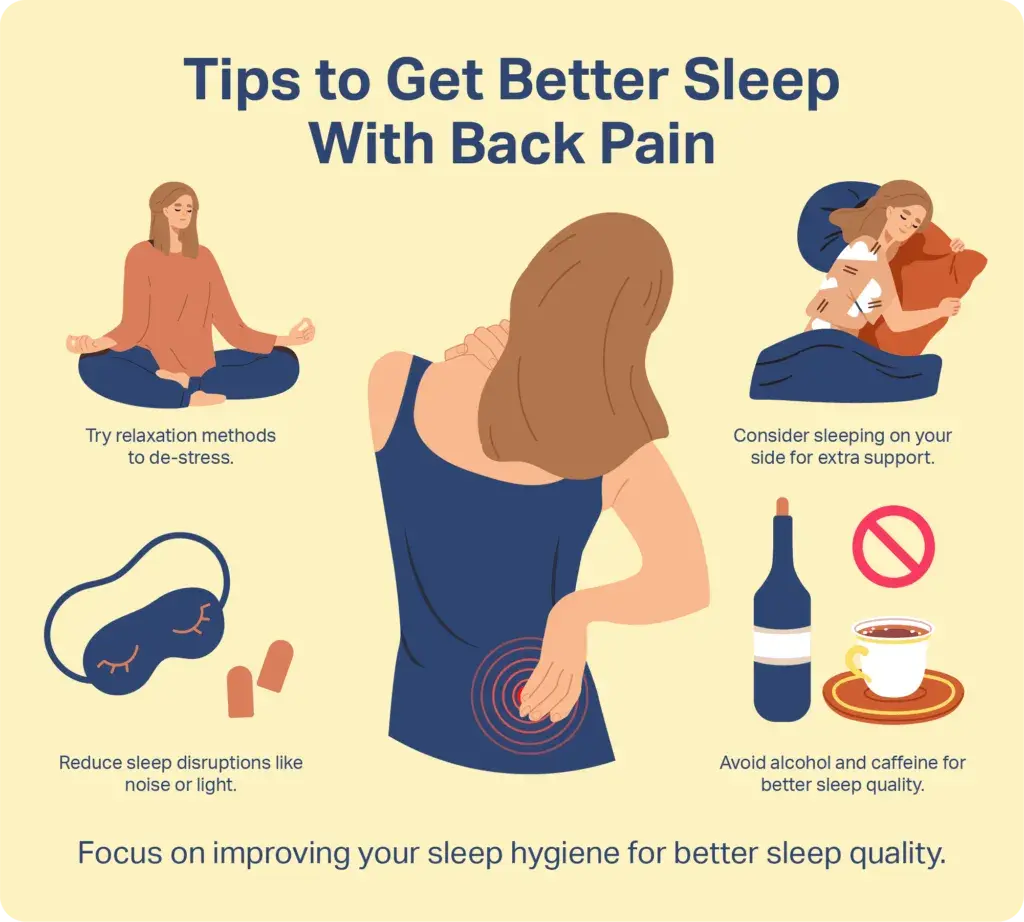Lower right back pain is frequently caused by mechanical issues affecting the spine, muscles, tendons, and ligaments; however, it can also result from infections, kidney stones, or appendicitis. The appropriate treatment for this condition varies depending on the underlying cause but may involve physical therapy or surgical intervention. The lower back bears substantial weight and is vulnerable to injuries on either side. Additionally, back pain on the right lower side can be caused by conditions affecting other body parts, including infections or inflammation. The nature of lower right back pain can vary depending on its underlying cause. Some individuals may experience persistent, dull aches or intermittent discomfort, while others may feel sudden, piercing sensations. The pain may be localized to the right side or radiate to other back and leg regions. This article will examine possible reasons for lower right back pain, how to prevent it, and diagnosis and treatment.
Also read: Risks of Untreated Chronic Back Pain
What is lower right back pain? How does it feel?
Lower right back pain can be minor as a dull ache, moderate as a heavyweight, or severe as a piercing stab. The discomfort may come and go or continue for an extended period. Pain can radiate, which means it can go from one part of the body to another. For example, nerves in your kidneys are linked to back nerves associated with ligaments and tissues. If the kidneys hurt, you may also have pain in the back, particularly in the lower right area.
Also Read: What causes Back Pain When Breathing?
What is the causes of lower right back pain?
Lower right back pain can be caused by a variety of factors, including: 
Muscular strain or sprain:
One of the most prevalent right back pain reasons is Poor posture, carrying heavy things, rapid twisting motions, or even sleeping in an uncomfortable position can all cause it. Read Also: Can I Manage Back Pain at Home?
Sciatica:
Sciatica is a condition where the sciatic nerve, which runs from the lower back to the legs, is compressed or irritated. This can result in the lower back, buttocks, and leg discomfort, numbness, or tingling.
Herniated disc:
A herniated disc occurs when the soft tissue inside a spinal disc protrudes through a tear in the outer layer, putting pressure on nearby nerves. This can cause lower back pain, leg pain, and numbness. Also Read: Back Pain? Take these Spine tests
Kidney stones:
Kidney stones can cause severe pain in the back pain on the right lower side and abdomen, particularly on one side. Additional symptoms may include nausea, vomiting, and urination difficulties.
Ovarian cysts:
Ovarian cysts can cause lower back pain, particularly on one side. Other symptoms may include bloating, abdominal pain, and irregular periods.
Endometriosis:
Endometriosis is a disorder in which tissue comparable to the uterine lining develops outside the uterus. This can cause lower back pain, painful periods, pain during sex, and infertility.
Infections:
Infections of the urinary tract, kidneys, or spine can cause lower back pain, as well as other symptoms such as fever and nausea. Consulting a healthcare professional for an accurate diagnosis and appropriate treatment plan is important. Also Read: Can my back pain be a spinal infection?
What are the treatment and medication options for Lower right back pain?
The treatment and medication options for lower right back pain will depend on the underlying cause of the pain. Here are some common treatment and medication options:
Pain relievers
Acetaminophen, ibuprofen, and naproxen are over-the-counter pain medications that can help decrease pain and inflammation. Also Read: Relieving Back Pain With Vitamin D & B12
Muscle relaxants
If the pain is due to muscle spasms, a healthcare professional may prescribe muscle relaxants to help ease the spasms.
Physical therapy
A physical therapist can develop an exercise program to help strengthen muscles, improve flexibility, and reduce pain. Also Read: 7 Yoga Poses for Back Pain
Heat or ice therapy
Heat or ice therapy may help reduce pain and inflammation in the affected area.
Injections
Injections of corticosteroids can help decrease inflammation and discomfort in the afflicted region.
Surgery
In some cases, surgery may be necessary if the pain is due to a herniated disc or other structural issues. Read Also: 11 Exercises That Can Help Relieve Lower Back Pain
Chiropractic care
Chiropractors can use techniques such as spinal manipulation to help alleviate pain and improve mobility.
Massage therapy
Massage therapy can aid in the relaxation of stiff muscles and the improvement of blood flow to the brain.
Acupuncture
Acupuncture involves the insertion of needles into specific points on the body to help relieve pain and improve overall health.
Transcutaneous electrical nerve stimulation (TENS)
TENS involves using a small device that delivers electrical impulses to the affected area to help reduce pain. It is important to consult a healthcare professional to determine the best treatment and medication options for your needs.
Checkout these Support belts for lower back pain
Also Read: 30th Week of Pregnancy: Be Careful About The Back Pain
How to prevent lower right back pain?
Back pain on the right lower side can often be prevented by following these tips: 
- Maintain good posture while sitting and standing
- Exercise regularly to keep your back muscles strong and flexible
- Avoid lifting heavy objects and use proper lifting techniques when you do need to lift something
- During sleeping, choose a firm mattress and pillow.
- Take frequent breaks and stretch if you spend long periods sitting or standing
- Maintain a healthy weight to reduce stress on your back
- Stay hydrated by drinking plenty of water
- Quit smoking as it can contribute to back pain by reducing blood flow to the spine
Following these tips can help prevent lower right back pain and reduce the likelihood of developing back problems. Read Also: 8 Best Ways to Prevent Chronic Back Pain
How can lower right back pain be diagnosed?
A health assessment and an examination of the medical history are required to diagnose lower right back pain. A neurological exam may determine whether your movements are normal or look for deficits or feelings that indicate nerve damage. Your doctor may arrange imaging scans to search for spinal abnormalities depending on the results. This may include an X-ray of the spine or a computed tomography (CT) scan, which combines numerous X-ray pictures into a 3-D image. Another technique that can identify soft tissue injury more accurately is magnetic resonance imaging (MRI). An electromyography, or nerve conduction examination, could be ordered. This can demonstrate to the doctor how well electrical impulses flow across nerves. Read Also: What kind of back pain do I have?
Conclusion -
Back pain on the right lower side can range from a minor sprain that can be alleviated with ice packs and rest to a severe condition like a spinal tumor. Therefore, informing your healthcare provider about your symptoms is essential, as they can provide an accurate diagnosis and recommend the appropriate treatment. Neglecting to seek medical attention for underlying kidney or liver issues causing the pain may result in permanent damage to these vital organs. To aid in your diagnosis and treatment, it is recommended that you monitor your lower right back pain symptoms, noting the timing, intensity, and any accompanying symptoms. This valuable information can assist your healthcare provider in accurately identifying and treating your condition. Read Also: Back Pain During Pregnancy

Reviewed by







